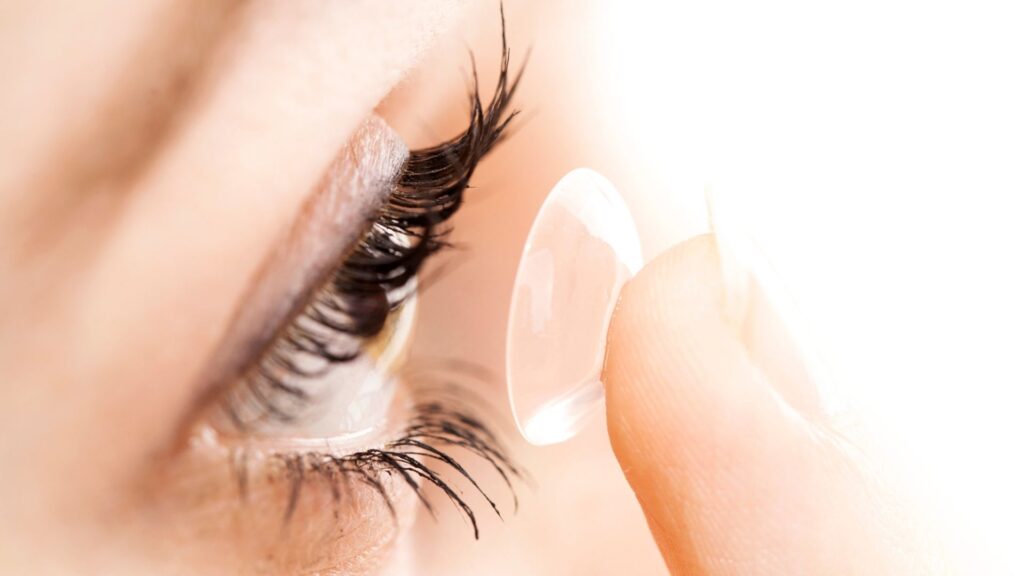
Life is Better Through Lenses
Every human being is equipped with five senses: sight, taste, smell, hearing, and touch. Human eyes are gorgeous, fascinating, intriguingly structured, also complex at the same time. Amazing, really, is our ability to take in light and convert it into vision.
Besides letting us see the world, what else do eyes do? A person’s eyes are often referred to as the “windows to their soul.” If you’re truly smiling, it will spread from your lips all the way to your pupils.
For what it’s worth, our eyes are by far the most crucial sensory organs. Up to 80% of what we take in comes via our eyes. The eyes are our strongest defense against harm if our other senses, such as taste and smell, fail. Therefore, eye protection is of utmost importance.
The pleasure of losing oneself in a book is tempered for most readers by the worry that they may be causing permanent damage to their eyes. “Put the light on, you’ll damage your eyes!” is advice that almost everyone has heard at some point. However, you shouldn’t be concerned; reading in the dark has no negative effects on your eyes. However, if you need reading glasses, you should wear them.
For various reasons, some people may tire of constantly needing to wear eyeglasses. One might be that they’re not very comfortable to wear. People may prefer contacts to glasses because they are more practical. With contact lenses, you can see well without worrying about your glasses misplacing themselves or misting up.
Although contact lenses are convenient and easy to use, picking the wrong pair can lead to a number of issues. You may feel overwhelmed by the sheer number of alternatives accessible to you in today’s market. Finding the right contact lens for your eyes can be a breeze when you know the ins and outs of the various options available.
Sirwiss partner optometrists have the expertise to help you find the perfect pair of glasses, whether you’re a first-time buyer or an existing customer who’s unhappy with your current lenses. Keep reading and you will learn how to find the right lenses for your eyes.
The Basics: Different Types of Contact Lenses
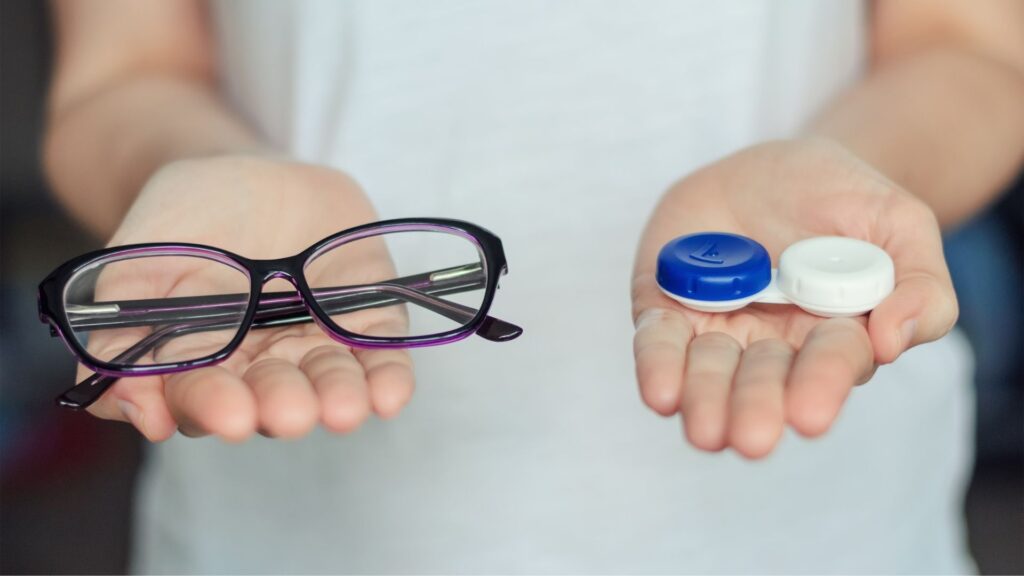
Trouble with vision (refractive errors) can be corrected with one of the numerous available varieties of contact lenses. Lenses can be either soft or hard, and there are also bifocal, Toric, and progressive alternatives. The kind of refractive error you have will determine the lens type you need. If you want to know what your best option is, you should talk to your doctor.
Common types of refractive errors include:
- Astigmatism
- Nearsightedness (myopia)
- Age-related farsightedness (presbyopia)
- Farsightedness (hyperopia)
- A combination
The number of persons who use contact lenses is in the millions. Buying contacts for the first time is, in a word, baffling. Disposable? Regular use? Toric eyewear? To what end does this serve? Which one should you choose? When choosing the best contact lenses, we may need to consider the purpose.
Soft Contact Lenses
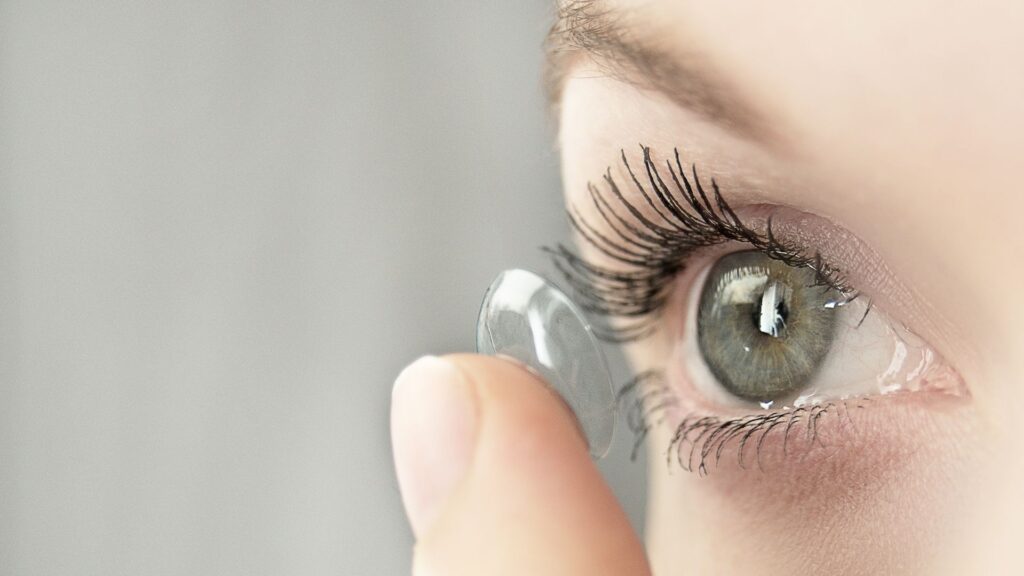
Soft contact lenses, like silicone hydrogel, are comprised of pliable plastics. The health authorities consider most soft lenses to be “disposable,” thus those who use them must adhere to strict replacement schedules. By not wearing contacts for too long, you reduce your chances of getting an eye infection or “contact lens overwear syndrome.” Daily, weekly, biweekly, or monthly lens changes are common depending on the kind of contact. Because of their superior comfort, soft contact lenses have replaced hard ones as the norm. A wide variety of soft contact lens options are currently on the market.
Some of the most frequent are:
1. Daily Contacts
Daily wear contacts are only worn for one day.
Most people wear daily disposable contacts after waking up and discard them before going to bed. They should never be worn while sleeping. If you just wear contacts on occasion, everyday contact lenses are an excellent choice.
The advantages of daily disposable contacts:
- Safe and Convenient. Daily contacts are convenient because wearers dispose of them each night. You also do not have to invest in contact cleaning solutions.
- Better for Your Eye Health. Reusable lenses can lead to eye infections, whereas daily contact reduces the risk of diseases because you wear a fresh pair every day.
- Reduce Allergies. Dailies are also great for eye allergy sufferers since they reduce the potential for allergen build up on the lenses.
- Cost-effective. You do not have to buy contact cleaning supplies for daily contacts, which can save money in the long run. This is especially true if you do not wear contacts every day.
The disadvantages of daily disposable contacts:
They can be expensive. Although convenient, daily contact lenses can be costly if you use more than one pair a day.
2. Weekly/Monthly Disposable Contact Lenses
Disposable lenses are replaced weekly, bi-weekly, or monthly.
It is recommended that those who wear disposable contacts soak them overnight in contact solution. You shouldn’t sleep with your contact lenses, just like you shouldn’t do that with daily disposables. Even astigmatism and presbyopia (multifocal vision correction) can be corrected with daily disposable lenses. You may be limited to weekly or monthly disposables rather than daily disposables if your prescription is too high.
The advantages of disposable contact lenses:
- Ideal for Everyday Use. Monthly disposable contacts are a great and cost-effective option for people who wear contacts every day or most days.
- Cost-effective. These contacts are relatively inexpensive (compared to other types of lenses).
The disadvantages of disposable contact lenses:
- Less Convenient Than Daily Contacts and Extended Wear Contacts. Unlike other types of soft lenses, disposable contacts have to be removed and soaked in contact solution nightly.
- They are Less Sanitary Than Daily Disposables. Weekly or monthly disposables are considered safe for use. However, monthly reusable contacts are less hygienic than daily disposable contacts.
3. Extended Wear Contact Lenses

Extended wear lenses are soft contacts that people wear overnight.
Most extended wear lenses can be worn continuously for up to seven days and nights. Some, however, can stay put for up to 30 days. It is recommended by eye care professionals that you wait a full night before replacing your contact lenses.
The advantages of extended wear contacts:
- Convenient. They do not have to be removed or replaced for up to a month.
- They Provide Adequate Oxygen Flow Through the Eye. Soft extended-wear contacts are made of flexible plastic materials, which allow oxygen to flow through the cornea. Hard contact (rigid gas permeable) lenses cannot be worn overnight because they do not mold to your eye shape. Thus, less oxygen passes through the cornea, which can lead to serious eye problems (e.g., blurred vision) over time.
- Cost-effective. A 12-month supply of extended wear lenses will cost anywhere between $250 and $300.
When it comes to oxygen dispersion, a contact lens’s material matters more than its flexibility. Most extended-wear contact lenses are made of silicone hydrogel, the most oxygen-permeable soft contact lens material. In comparison to older types of hard lenses, modern RGP (rigid gas permeable) lenses allow much more air to pass through. As much oxygen is allowed through as with soft contacts in some circumstances.
The disadvantages of extended wear contacts:
- Eye Infection Risks. Extended wear contact lens wearers have a higher chance of developing eye infections. This is because bacteria and other potentially harmful microorganisms can get trapped between your eye and the lens. Severe and untreated eye infections can lead to blindness.
Extended wear contacts do not support every lens type. It is essential to get an exam so your eye care provider can determine your tolerance to overnight contacts.
Hard Contact Lenses
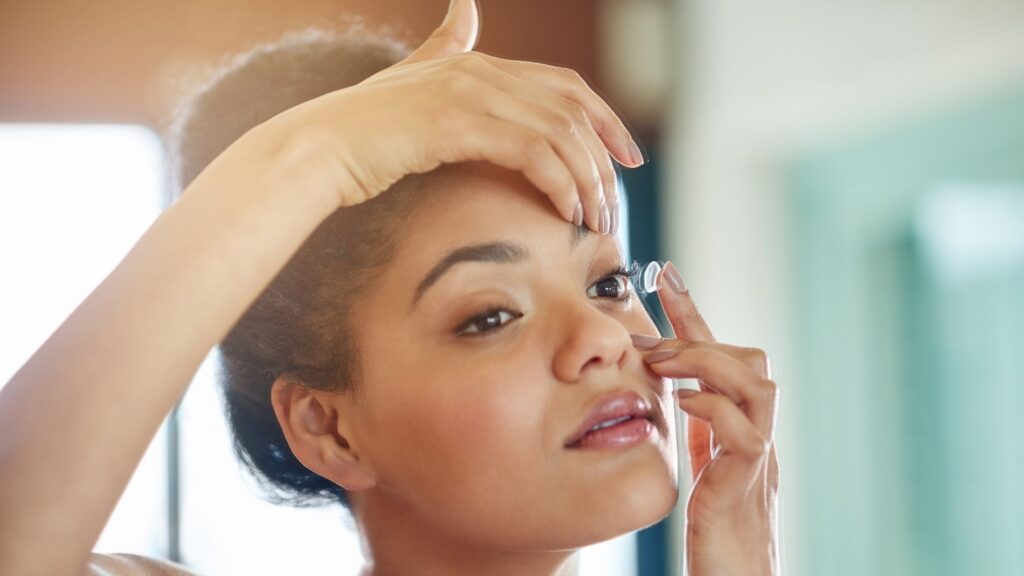
Hard contact lenses, or stiff lenses, are often produced from gas-permeable materials. PMMA (traditional) lenses and RGP (refractive glass) lenses are the two most common forms of hard lenses. RGP contacts, in contrast, don’t block oxygen from reaching the cornea like conventional lenses do. Additionally, they provide superior comfort to PMMA contacts. PMMA lenses restrict oxygen from reaching the cornea, which can cause long-term eye damage.
Rigid Gas-Permeable Lenses (RGP)
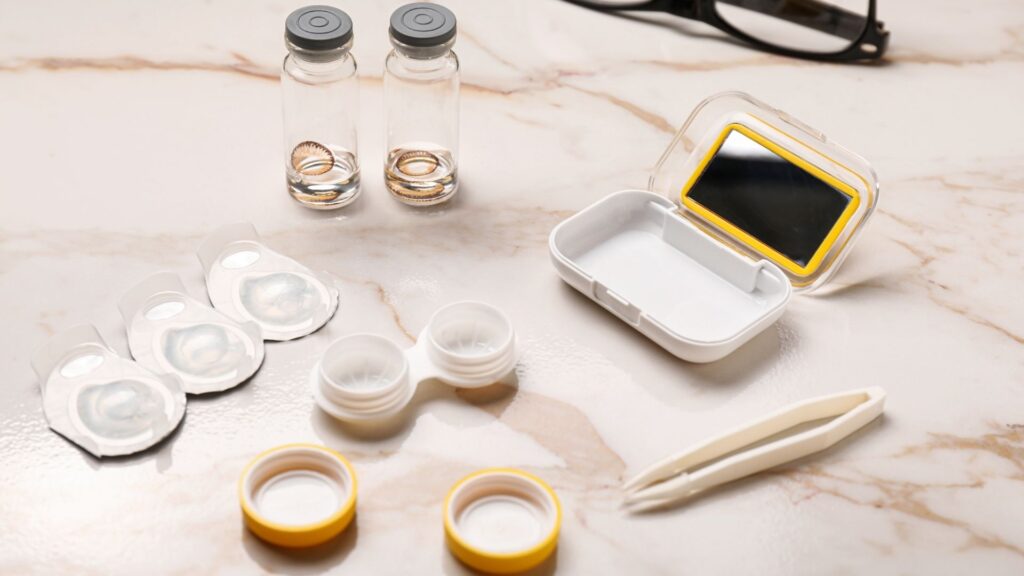
Compared to standard hard lenses (PMMA), they come at a higher price. Some RGP lenses are safe to sleep in and only require replacement every few years. Wearing them for long periods of time or while sleeping is generally discouraged by ophthalmologists. Astigmatism (hazy vision caused by a defect in the eye’s shape) and keratoconus (a bulging cornea) are two conditions that benefit greatly from RGP contact lenses.
The advantages of RGP lenses include:
- Retain Shape. RGP lenses mold to your eye and retain shape when blinking because they consist of a firm plastic material.
- Sharper Vision. These lenses provide sharper vision than soft lenses.
- Durability. GP lenses are very durable but slightly less durable than PMMA hard lenses.
- Oxygen Flow. They offer better oxygen flow to the cornea than other types of hard lenses.
The disadvantages of RGP lenses include:
- Comfortability. They are less comfortable than soft lenses.
- Price. RGP’s are more expensive than other types of hard contact lenses.
PMMA Lenses

The first artificially created hard lens was the conventional contact lens, commonly known as a polymethylmethacrylate lens. Polymethylmethacrylate (PMMA), a rigid plastic similar to plexiglass, is what they’re made of. PMMA lenses typically have an 8- to 16-hour wear period. Despite their superior optical quality, PMMA lenses do not allow enough oxygen to reach the eye. Because of this, soft contact lenses are far more popular than hard ones.
The advantages of PMMA lenses include:
- Maintenance. They are easy to maintain and take care of.
- Inexpensive. They are durable and less expensive than other types of contact lenses.
- Extra Eye Safety. PMMA provides extra eye safety (minimal risk to the eyes) because the material is thick.
- Relative rigidity. They have relative stiffness (where flexing may be a problem).
The disadvantages of PMMA lenses include:
- Oxygen Flow. They interfere with the flow of oxygen through the cornea.
- Discomfort. PMMA lens materials do not mold to the shape of your eye. They are also the least comfortable type of contact lens. People who wear them are more prone to developing “contact lens overwear syndrome.”
Spectacle Blur. People who wear PMMA lenses are more susceptible to “spectacle blur.” This condition is when someone’s eyesight becomes blurry after they take their contacts out and put glasses on.
Other Types of Contact Lenses
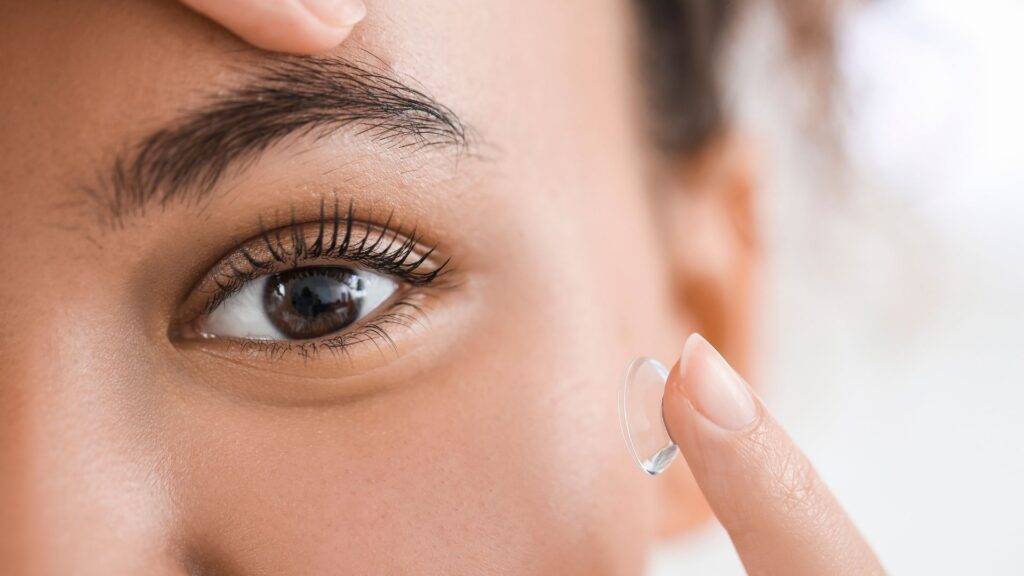
In some cases, eye care professionals may recommend customized lenses, depending on the patient’s eye shape and prescription.
Other, less common, types of contact lenses include:
1. Bifocal Contact Lenses
Bifocal contact lenses have two different prescriptions in the same lens. They work similarly to bifocal glasses. One prescription is for normal, distance vision, and the other is for close-up reading. These types of contacts have been around for many years but have been rising in popularity recently.
2. Multifocal Lenses (Presbyopia)
Presbyopia, also called age-related farsightedness, reduces the ability to focus up close as you get older. Eye doctors may recommend multifocal lenses to patients with presbyopia, especially if they do not want to wear two pairs of prescription glasses.
3. Toric Contact Lenses
Toric contact lenses are customized lenses that correct astigmatism. Astigmatism is a common refractive error caused by an imperfection in the curvature of the cornea (eye lens).
4. Bandage Lenses
Bandage contact lenses protect diseased or injured corneas from blinking and rubbing of the eyelids. They allow the corneas to heal and reduce discomfort. Bandage lenses typically consist of soft contact materials.
5. Transition Contact Lenses
Many people are familiar with transition glasses. But now transition contact lenses are available. They change color when exposed to UV light and provide a “sunglasses” effect.
Colors and Effects
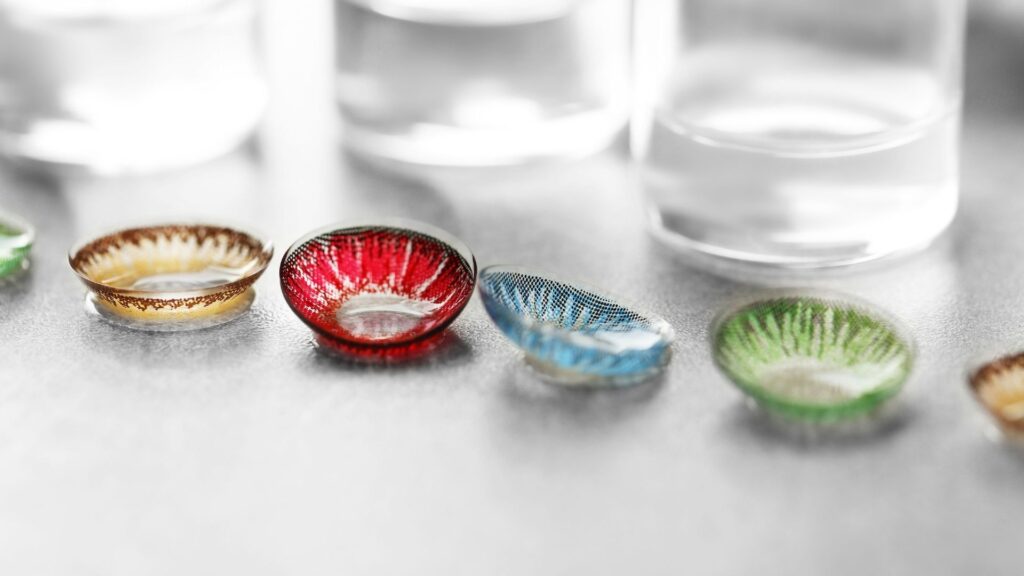
The majority of contact lenses are not clear. Some of them have different colors so you can find your lenses faster or so they have an effect on you. If you want to change or emphasize your eye color, colored contacts are a great option. The appearance of naturally black eyes can be altered by some. Cat eyes are only one of many creative uses for colored contact lenses. In spite of their popularity on Halloween and in the theater, these nevertheless require a fitting and a prescription.
Lenses Aren’t for Sharing
If you’re having trouble settling on a lens type, you might be tempted to give a different brand a shot. Don’t use someone else’s old lenses if they offer them to you. Lenses for the eye are not the same as eyewear. Particles and bacteria can be found in them due to their proximity to the user’s eyes. Never let someone else’s perspective become your own. That’s a surefire way to spread disease.
It’s up to You and Your Doctor
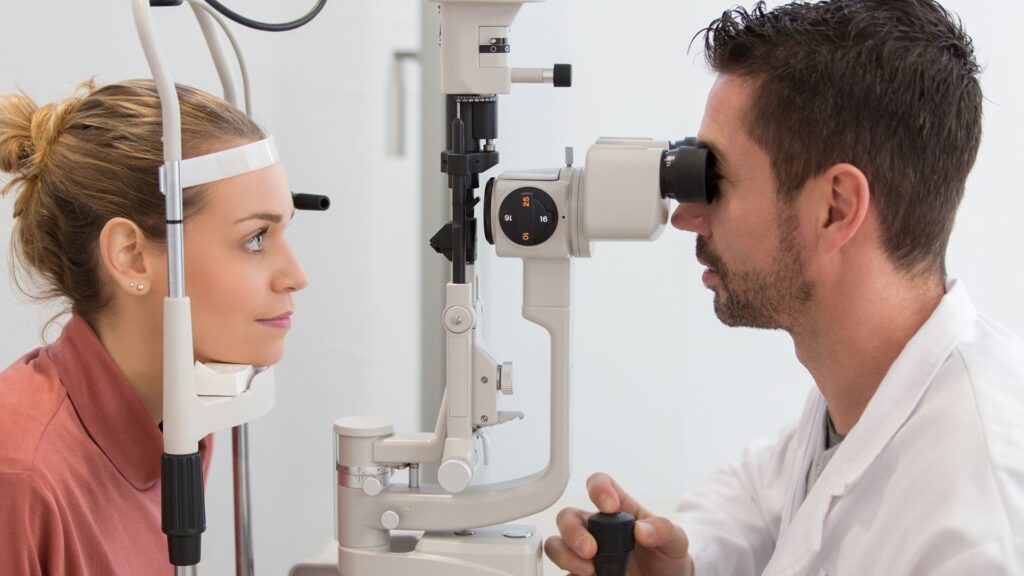
No matter how experienced you are with contacts, making your selection can feel overwhelming at first. Different brands of the same type of lenses exist, so it’s important to know what to look for. When weighing your options, remember your doctor’s advice and these guidelines. And don’t stress if your first pick isn’t ideal. You can always go for a different option the next time around if you don’t like the one you choose. Taking care of your eyesight is crucial.